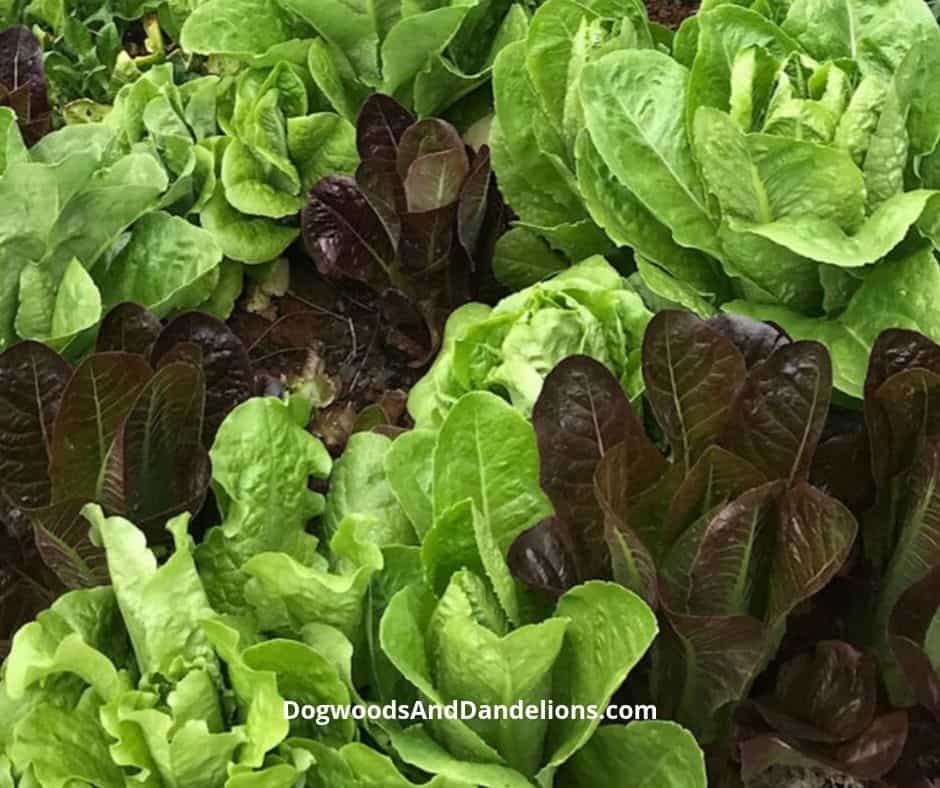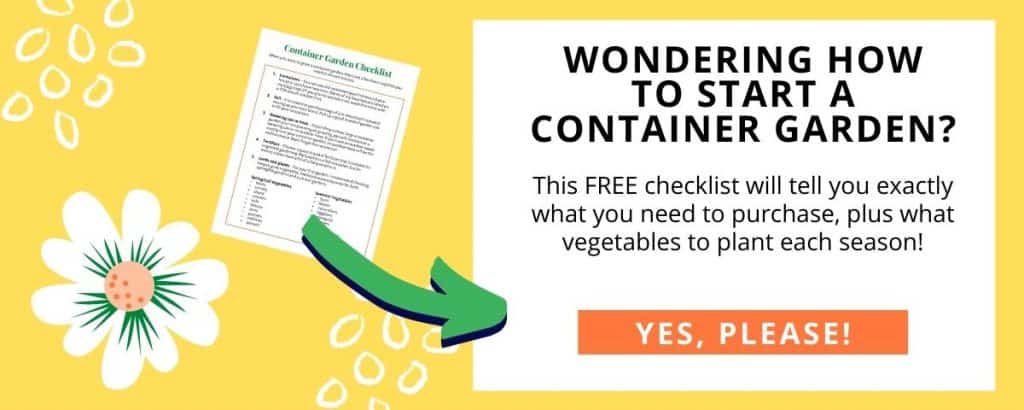Growing Winter Vegetables
Preview: Growing winter vegetables has many benefits. Cooler weather and less pests make winter gardening a much more pleasant task.
So cold weather is approaching. What if you don’t want to give up gardening just yet? Did you know that in many areas, you can continue to have some homegrown goodness from your garden all winter?
While heat loving plants such as peppers and tomatoes can’t handle even a light frost, some vegetables can tolerate the cold better. Some vegetables even thrive in the cold. Let’s look at some of the vegetables that grow in cooler weather.

Affiliate Disclosure: Please note that some of the links in this article may be affiliate links and I may receive a small commission if you purchase something through a link. It will not change your cost. As an Amazon Associate, I earn from qualifying purchases. For more information, see my disclosures page.)
How to Grow Winter Vegetables
When choosing a location to plant your winter vegetables, choose a location that gets as much sunlight a possible. A location that has a buffer from the wind is preferred. To ensure your vegetables get the nutrients they need, I highly recommend getting a soil test done and adding any amendments that are recommended.
Vegetables don’t grow as rapidly in cooler weather, so it will take a bit longer for them to mature. Winter vegetables do best if you get them established in the fall before really cold weather sets. However, if possible, wait until the soil temperature is below 70 degrees before sowing most winter crops. (I realize this isn’t always possible though. You can increase your chances of success with growing winter vegetables if you keep them watered. This also helps to lower the soil temperature.)
Once the vegetables emerge from the soil, mulch all winter crops heavily to help avoid the ground freezing and thawing. The freezing and thawing cycle can heave the plants out of the ground. A thick layer of mulch will also help prevent moisture evaporation from winter winds.
The Scoop on Growing Cruciferous Vegetables

Cole crops, otherwise known as cruciferous vegetables tend to do well in cooler temperatures. And many of these crops will bolt (go to seed) if it does get too hot.
Vegetables such as broccoli, cauliflower, cabbage, and Brussels sprouts can usually withstand temperatures down to 26 degrees without frost protection. However… and this is a big however, cruciferous vegetables can’t tolerate temps below 40 degrees for more than a week or so. You can grow these winter vegetables under grow tunnels in colder locations, but you will need larger hoops than you use for growing leafy greens.
Cruciferous vegetables are also heavy feeders, requiring good soil to produce decent crops. Because they take up so much space and need large hoop tunnels to grow during the winter, I’m not going to go into more detail about them. For the backyard gardener, especially the beginning backyard gardener, leafy greens and root crops make much more use of space in the winter garden and are not nearly as finicky.
Leafy Greens

Leafy greens often do well in colder temperatures. Lettuce, spinach, kale, and Swiss chard all prefer the cooler temperatures of fall and winter. A few frosts even make kale sweeter.
But there are some greens that hold up better than others under cold conditions. Most curly-leafed varieties of greens tend to withstand colder temperatures better than smooth-leafed types so keep that in mind when choosing your seeds.
And leaf lettuce overwinters better than head lettuce. Since young plants seem to hold up to the cold better than larger, older ones, harvest your lettuce frequently. Keep in mind, to be able to harvest greens all winter long, you will need to use some kind of frost protection in most locations. (See below for more information.)
There are also some interesting winter greens that you don’t usually find in the grocery store. Claytonia (also called Miner’s Lettuce) and mache are two cold hardy greens that I’ve never seen in my local stores. These two winter greens are more cold hardy than even kale so they are perfect for winter gardening. Claytonia has even been grown without protection in the maritime Northwest. I’m trying both for the first time this year. Hopefully this will cut down on the cost of my daily salads.

Recommended Varieties of Leafy Greens for Cold Weather
- arugula-Speedy, Roquette
- leaf lettuce-I prefer a mix and most seed catalogs sell blends specifically for winter harvest. Micro greens and mesclun blends tend to grow well in the winter.
- Romaine lettuce-Winter Density, Outredgeous
- kale-Lacinato, Redbor, Winterbor, Red Russian
- spinach-Tyee, Bloomsdale Savoy or Bloomsdale Long Standing
- claytonia
- mache-Vit
- Pak Choi (bok choy)-Joi Choi, Toy Choy
- Swiss chard-Fordhook Giant, Bright Lights, Lyon
- collards-Champion
- mustard greens-Frizzy, Dragon Tongue
Root Crops

Root crops such as beets, carrots, turnips, and green onions can be grown in the winter. Radishes grow quickly and can be ready for harvest from the winter garden in about 4-6 weeks.
Carrots and beets should be planted and allowed to grow for a bit in the fall. Before the ground freezes, mulch the carrots and beets heavily. In areas where the ground doesn’t freeze solid, you can mark your vegetable patch and dig these roots as you need them.
Turnips don’t handle hard freezes as well as carrots and beets, so they should be grown under a row cover or in a hoop house during the winter.
And green onions, a.k.a. scallions are another crop well suited to colder climates. They require little in the way of maintenance during their growing period except consistent moisture.
Recommended Varieties of Root Crops for Cold Weather
- carrots-Purple Haze, Yellowstone, Atomic Red, Napoli
- scallions-Evergreen Hardy White Bunching
- beets-Early Wonder, Robin, Bull’s Blood, Ruby Queen
- radishes-Celesta
- turnips-Purple Top White Globe, Hakurei
For a handy chart of when to plant certain vegetables, check out this chart from Mother of a Hubbard’s blog – Winter Vegetable Planting Chart. The chart is based on zone 6b, but can give you an idea of when to plant certain crops based on your own zone. The chart also recommends additional cold hardy varieties.
Ways to protect your crops in colder climates
If you grow winter vegetables in most locations, you will need some kind of frost protection. There are so many options on the market today to help protect winter vegetables. Of course, you can always use a greenhouse, but for many of us (myself included) the cost makes most greenhouses not an option.
To cover individual crops, you can purchase cloches to use. An old milk jug can work equally as well as a budget friendly option. However, a white milk jug won’t let as much light in as a clear container will. For another budget friendly option, check out your local dollar store for clear serving bowls or punch bowls.
Cold frames work well if you have a dedicated area to put the cold frame. There are many tutorials online about how to make one or there are many different styles online. The difficulty lies in keeping the winter vegetables from getting too warm on sunny days. Plus, most cold frames aren’t very tall so you are limited to what crops you can put in one.
One of the cheapest, yet easiest to use frost protection is a fleece tunnel. I have tried homemade ones in the past, but it has been difficult on windy days to keep the material from blowing around. And wind will suck the moisture right out of your precious vegetables. I am purchasing at least one of these this year to test out in my garden. I’ll update the post with more information once I’ve tested it out.
The Biggest Issue With Growing Winter Vegetables in Some Areas
One issue with growing winter vegetables is fluctuating temperatures. In my Zone 7 garden in NC, we can have 65-70 degree days occasionally during the winter. This makes winter gardening a struggle as the cooler crops really don’t like the warmer days. If you have winter vegetables under a cover, you must remove it or at least vent it on days when it warms up. This can be difficult to do if you work a day job.

For More Information on Growing Winter Vegetables
While growing winter vegetables can be a challenge at times, it is always fun to experiment. Most of these vegetables are planted directly in the ground from seed, so the investment is minimal for the potential harvest.
If you would like to learn more about winter gardening, check out The Year Round Vegetable Gardener by Niki Jabbour. This is a must-have book on your bookshelf. This book explains how to grow your own food 365 days a year no matter where you live. It covers so many basic gardening tips to help you get the most out of your garden. The author lives in Nova Scotia so she knows a thing or two about winter gardening.
And before you start your winter garden, make sure you’ve cleaned up the garden properly and prepared your garden for the winter so you have room to plant these delicious crops. Have you ever grown a winter garden? What grew best in your area?
